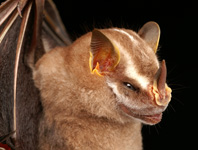Abstract
Current taxonomic practices require corroboration from multiple lines of evidence to provide sufficient rigor for species discovery and description. However, many recently named taxa (species–families) are defined by nucleotide sequence with little or no description of the features that traditionally define higher taxa and link nucleotide-based information to the existing taxonomic system. Without knowledge of form, it may be impossible to identify conspecifics, congeners, and confamiliars of new taxa among the hundreds of specimens and described species for which nucleotide sequencing is not now, and may never be, available. Additionally, some nucleotide sequences are invariant or inconsistently differentiated between congeners; severely limiting the utility of nucleotide-based taxon definitions. Here we use serial histology of paratypes to reveal the microanatomy of internal structures and revise the definitions of the Zoanthidea taxa Corallizoanthus tsukaharai Reimer, Antipathozoanthus hickmani Reimer & Fujii, Parazoanthus darwini Reimer & Fujii, Terrazoanthus onoi Reimer & Fujii, Terrazoanthus sinnigeri Reimer & Fujii, Microzoanthus kagerou Fujii & Reimer, and Zoanthus kuroshio Reimer & Ono; examination of Mesozoanthus lilkweminensis Reimer & Sinniger failed to produce interpretable sections. The results described here, with individual measurements documented in Morphbank (collection 829724) and Encyclopedia of Life (by taxon name), indicate a notably rich diversity of form for an order that is often characterized as depauperate in morphological diversity. One prominent example is a novel marginal muscle structure (cyclically transitional) that is not observable without serial sections. These findings may renew interest in morphological characters and provide the foundation for revision of Zoanthidea higher taxa, particularly now that phylogenetic relationships for these taxa can be inferred.

